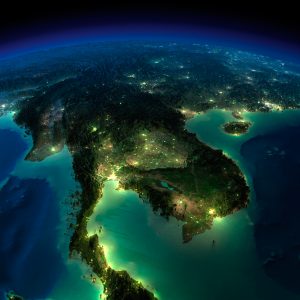The world is emerging from the biggest social and economic shock in living memory, but it will be a long time before the deep scars of the COVID-19 pandemic on human well-being fully heal.
In the Asia-Pacific region, where 60 percent of the world lives, the pandemic revealed chronic development fault lines through its excessively harmful impact on the most vulnerable. The United Nations Economic and Social Commission for Asia and the Pacific (ESCAP) estimates that 89 million more people in the region have been pushed back into extreme poverty at the $1.90 per day threshold, erasing years of development gains. The economic and educational shutdowns are likely to have severely harmed human capital formation and productivity, exacerbating poverty and inequality.
The pandemic has taught us that countries in the Asia-Pacific region can no longer put off protecting development gains from adverse shocks. We need to rebuild better towards a more resilient, inclusive, and sustainable future.
We know that the post-pandemic outlook remains highly uncertain. The 2021 Economic and Social Survey for Asia and the Pacific released last week by ESCAP shows that regional economic recovery will be vulnerable to the continuing COVID-19 threats and a likely uneven vaccine rollout. Worse, there is a risk that economic recovery will be skewed toward the better off – a “K-shaped” recovery that further marginalizes poorer countries and the disadvantaged.
The good news is that countries in Asia and the Pacific have taken bold policy measures to minimize the pandemic’s social and economic damage, including unprecedented fiscal and monetary support. Last year, developing countries in the region announced some $1.8 trillion, or nearly 7 percent of their combined GDP, in COVID-19 related budgetary support. But investments in long-term economic resilience, inclusiveness, and green transformation have so far been limited.
The region’s vulnerability to shocks like COVID-19 was heightened by its lagging performance toward achieving the Sustainable Development Goals, which would have enhanced resilience by reducing entrenched social, economic, and environmental deficits.
The evidence shows that we need a better understanding of the Asia-Pacific region’s complex risk landscape, and a comprehensive approach to building resilience in the wake of the COVID-19 crisis. Building resilience into policy frameworks and institutions will require aligning fiscal and monetary policies and structural reforms with the 2030 Agenda for Sustainable Development.
ESCAP research maps out a “riskscape” of economic and non-economic shocks – financial crises, terms-of-trade shocks, natural disasters, and epidemics – and shows that all adverse shocks have cause severe damage to the region’s social, economic, and environmental well-being. It takes several years for investment and labor markets to return to their pre-crisis levels. Adverse shocks also leave behind long-term scars by widening inequality and increasing pollution. But bold policy choices can reduce setbacks. Governments must implement aggressive policy responses to protect hard-won development gains.
Notably, policy packages should align post-pandemic recovery with the 2030 Agenda. ESCAP recommends a policy package focusing on three areas – ensuring universal access to health care and social protection, closing the digital divide, and strengthening climate and energy actions. Estimates show that such an approach could reduce the number of poor people in the region by almost 180 million and cut carbon emissions by about 30 percent in the long run.
Building resilience does not add too much financial burden to the region if such investments are accompanied by bold policy actions, such as ending fuel subsidies and introducing a carbon tax. A range of policy options can meet immediate and medium-term financing needs with great potential for Asia-Pacific countries to leverage these options.
However, it is important to note that several countries will need to engage closely with international development partners and the private sector. Least developed countries with significant “resilience gaps” will also require international assistance. Developed countries that fulfil their Overseas Development Aid (ODA) and climate finance commitments will go a long way in scaling up long-term investments and addressing these countries’ vulnerability to shocks.
COVID-19 has been a trauma like no other. Yet, it offers a unique opportunity for governments and other stakeholders to chart a new path to rebuilding. While being forced to adjust, the Asia-Pacific region has seen fundamental transformations in lives, workplaces, and habits. It is high time that the region takes its lessons from this pandemic and commits to a foundation that ensures a solid ability to withstand future jolts to the system without its people, and the planet, having to again pay a high price.

































